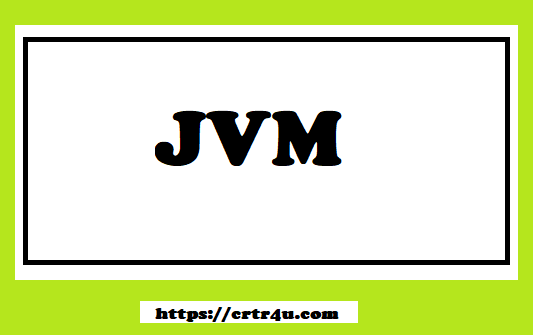Introduction:
The Java Virtual Machine (JVM) is the heart of the Java platform, responsible for executing Java bytecode and providing a robust and portable runtime environment. In this in-depth article, we will embark on a journey to explore the inner workings of the JVM. We will delve into its architecture, memory management, garbage collection, class loading, and Just-In-Time (JIT) compilation. By understanding the internals of the JVM, developers gain valuable insights into Java’s performance, memory utilization, and optimization techniques.
- JVM Architecture:
- Overview of the JVM’s architecture, including its major components.
- Explanation of the Java bytecode and how it is executed by the JVM.
- Introduction to the JVM’s instruction set and stack-based execution model.
- Memory Management:
- Explanation of Java’s memory model, which consists of the heap, stack, and method area.
- Detailed exploration of the JVM’s memory organization and how it handles object allocation and deallocation.
- Overview of the different garbage collection algorithms employed by the JVM.
- Garbage Collection:
- In-depth exploration of garbage collection in the JVM, including its goals and strategies.
- Explanation of the different garbage collection algorithms, such as Mark-Sweep, Copying, and Mark-Compact.
- Discussion of generational garbage collection and how it optimizes memory management.
- Class Loading:
- Overview of the class loading process in the JVM, which involves loading, linking, and initialization phases.
- Explanation of class loaders and their role in dynamically loading classes at runtime.
- Discussion of class loading mechanisms, including delegation model and custom class loaders.
- Just-In-Time (JIT) Compilation:
- Introduction to JIT compilation and its significance in improving Java’s performance.
- Explanation of the JVM’s HotSpot compiler and how it optimizes bytecode at runtime.
- Discussion of different levels of JIT compilation, such as C1 (client) and C2 (server) compilers.
- Performance Monitoring and Tools:
- Overview of JVM performance monitoring tools, such as Java Flight Recorder (JFR) and Java Mission Control (JMC).
- Introduction to profiling techniques for identifying performance bottlenecks and optimizing Java applications.
- Discussion of JVM tuning parameters and best practices for improving application performance.
- Security and Sandboxing:
- Brief overview of JVM’s security model and its role in providing a secure runtime environment for Java applications.
- Explanation of the bytecode verification process and how it ensures the safety of executing code.
Conclusion:
By delving into the depths of the JVM, we have gained a comprehensive understanding of its internal workings. From its architecture to memory management, garbage collection, class loading, and JIT compilation, the JVM’s intricate mechanisms drive Java’s performance and portability. Armed with this knowledge, developers can make informed decisions, optimize their Java applications, and troubleshoot performance issues. Understanding the JVM internals empowers developers to write efficient and robust Java code that fully leverages the capabilities of this powerful runtime environment.


